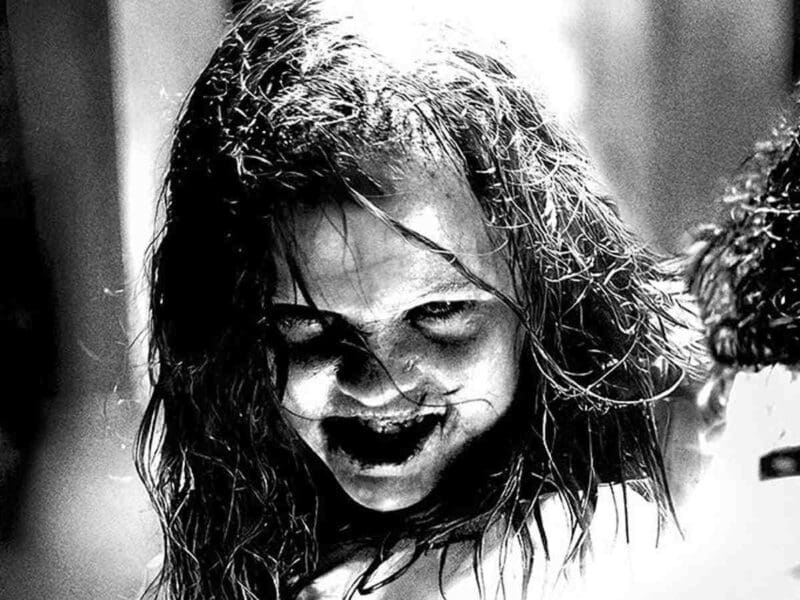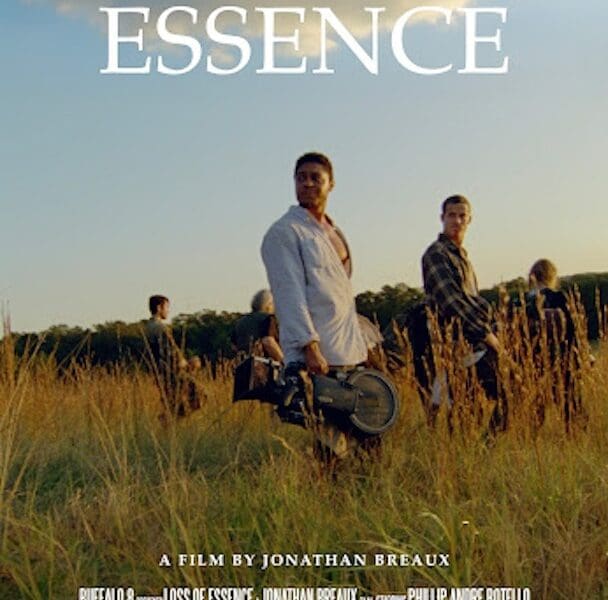Is ‘Sirena Rojo’ YouTube music video you need to watch?
What does it take to make a star? What must one do to create a life driven by performance? We caught up with the founders of Sinderela, the multidisciplinary arts organization about fast & dirty content making to find out how to produce content on the fast track after the chaos of the COVID-19 pandemic.
Film Daily: What is Sinderela?
Frances: It’s a space created by entrepreneurs who love art. We’re dedicated to telling stories about the scary things in life and creating peaceful activism – showing the realities of life through art and working with the underemployed.
As Sinderela, we’re really trying to create a legacy for people who may not necessarily have been given opportunities to be on a global stage before, but are worthy of it.
Dionicio: Sinderela is a space for diverse content which touches on gender, violence, and body diversity. Modern life can be viewed as a horror story in itself; we focus on topics people don’t or aren’t willing to speak about. Our goal is to create a legacy from the macabre for the people who work with us – and of course ourselves.
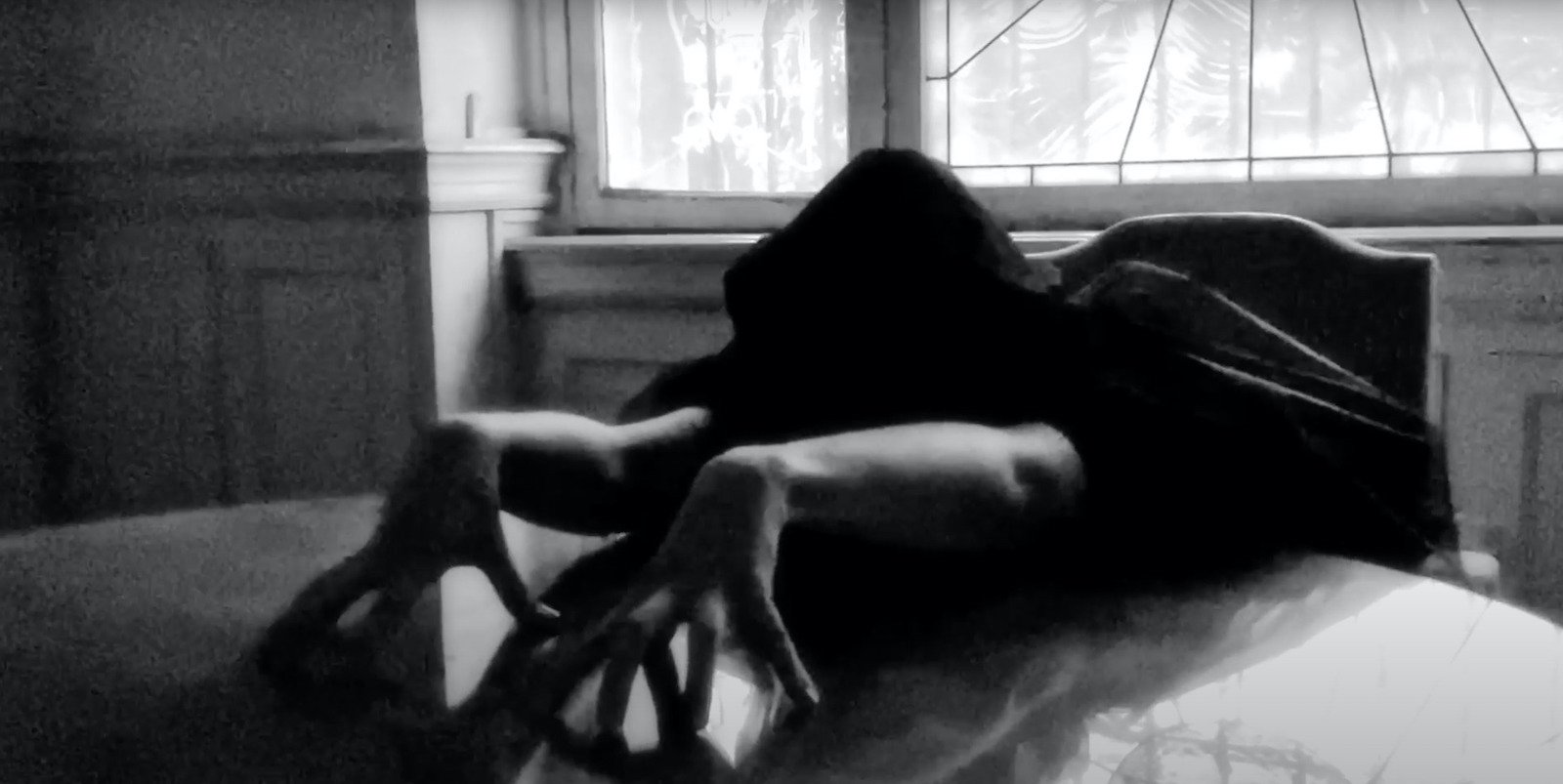
What is your vision of cinema, and what do you want to achieve through filmmaking?
Frances: We want to demonstrate to everyone in the world that, if you have a story to tell, you don’t need fancy equipment or to spend a lot of money. You do need to study the art form by watching films, meet other filmmakers, and collaborate with amazing people. You can create content that matters – without spending half a million dollars going to film school.
Dionicio: I trained as a choreographer and came to producing through live events and theater. For me it’s been a great experience to learn filmmaking at Raindance film school. I’ve studied assertive & collaborative communication with each member of my team with the right cinematic language. But I agree with Frances that you need to work with the resources you have.
Put all your creativity into your available resources and collaborate with people who are already creating. It might not be perfect, but you can learn together. The magic comes from committing to the journey.
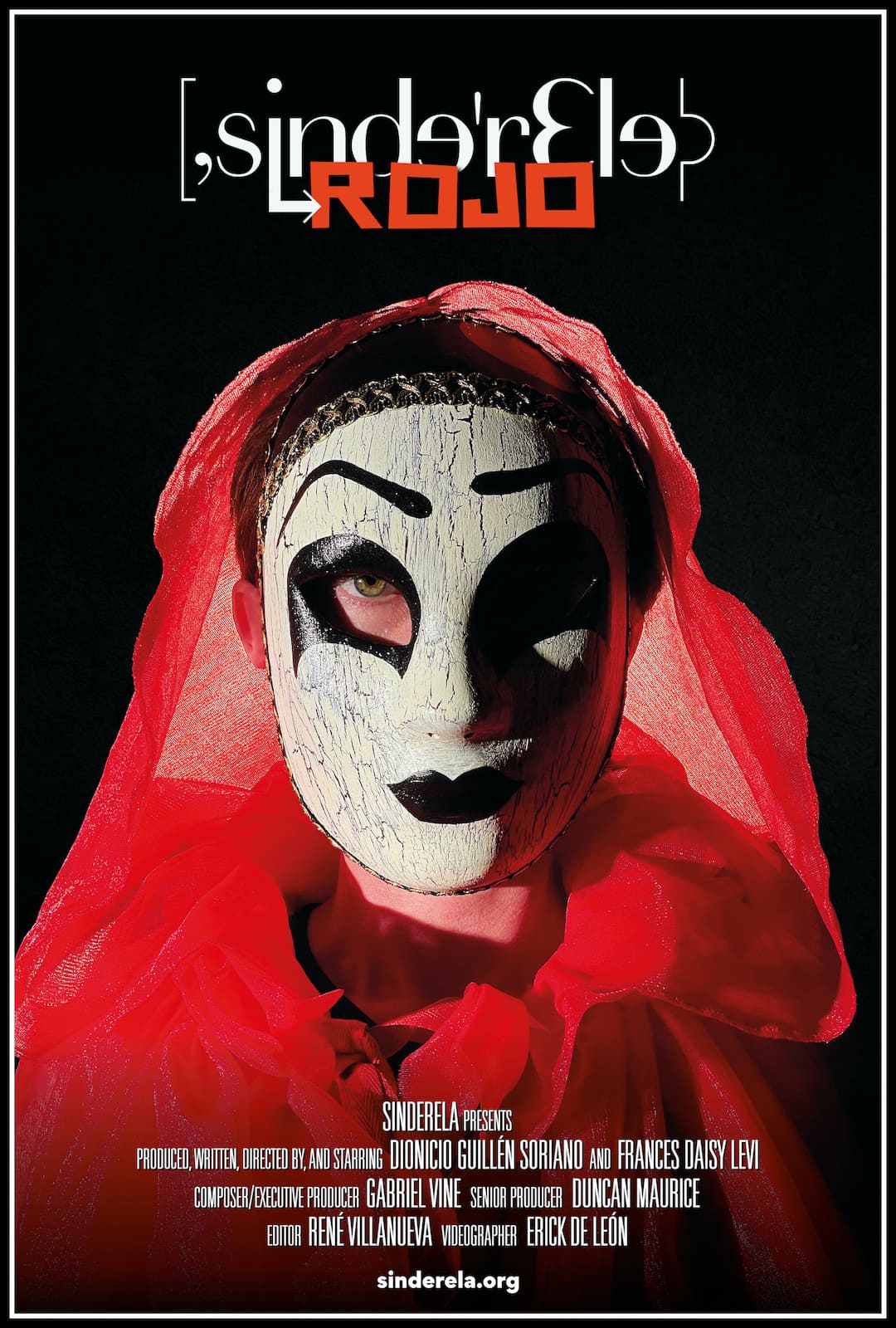
What are your biggest creative inspirations?
Frances: I’m a journalist: I’m inspired by real life, real stories, real people, street life. I came up through night clubs & the music scene, so I’m very interested in stories condensed like in song lyrics. I like to make content that contains three, four, five microstories which fuse together to create a bigger story.
Our editing team hates me because to create twenty minutes of story, we have to edit about two thousand cuts. We needed to be super lean in the pandemic and some of our content is dance- and performance-led – hours & hours of practice of classical ballet and pointe work in 2021, for example. As my choreographer, poor Dionicio tears his hair out when I get a step wrong for the thousandth time.
Given modern attention spans, I always try to encapsulate a story in the shortest time. In a less ephemeral way, of course, I’m hugely inspired by Helmut Newton, the fashion photographer. On the practical level, I love the golden age of Hollywood model, in which they operated like a telenovela [soap opera] studio, making a movie a week and sharing resources between productions.
I love to compare Old Hollywood’s productivity to modern Hollywood spending seven years to make the 87th boring Spider-Man movie.
I’m also inspired by working-class people and kitchen sink movies. Inspiration is everywhere in life – watching people work and create things with their hands is magic to me.
Dionicio: As a kid I was glued to the television watching all kinds of content, from cartoons to documentaries. I’m from Guadalajara and there was a channel dedicated to local art at night which I loved to watch. That definitely inspired me to create my own content, but more than that, to approach the people that really should be featured in these shows based on their talent. I could see early on that hiring the same actors is boring – I wanted to do something outside what regular TV does.
Fascinating subjects to me include sex work, scary stories, and fantasy – but one of my favorite all-time themes is metaphysics.

Tell us about your creative process.
Frances: It depends if it’s client-based or personal. For clients, my personal process starts with the marketing machine. For personal content, we already know what we want to create – but I’ll always be a marketer so it’s audience first.
For Sinderela projects, we have a really specific way of working: it always starts with the music. Next come costumes. We don’t start with the story ‘til the music is decided on because it’s dance-related. Textual & visual are very close; the Sinderela has success right now because we all love music.
Dionicio: The creative process is my big love, and I give time & patience to it. I take a few days away from the city in nature to think about what I want to do and organize all my ideas. I currently think of my creative process as training as we’re always moving, watching different content.
For me, the creative process is like food: something you have like breakfast, lunch, and dinner on a daily basis.
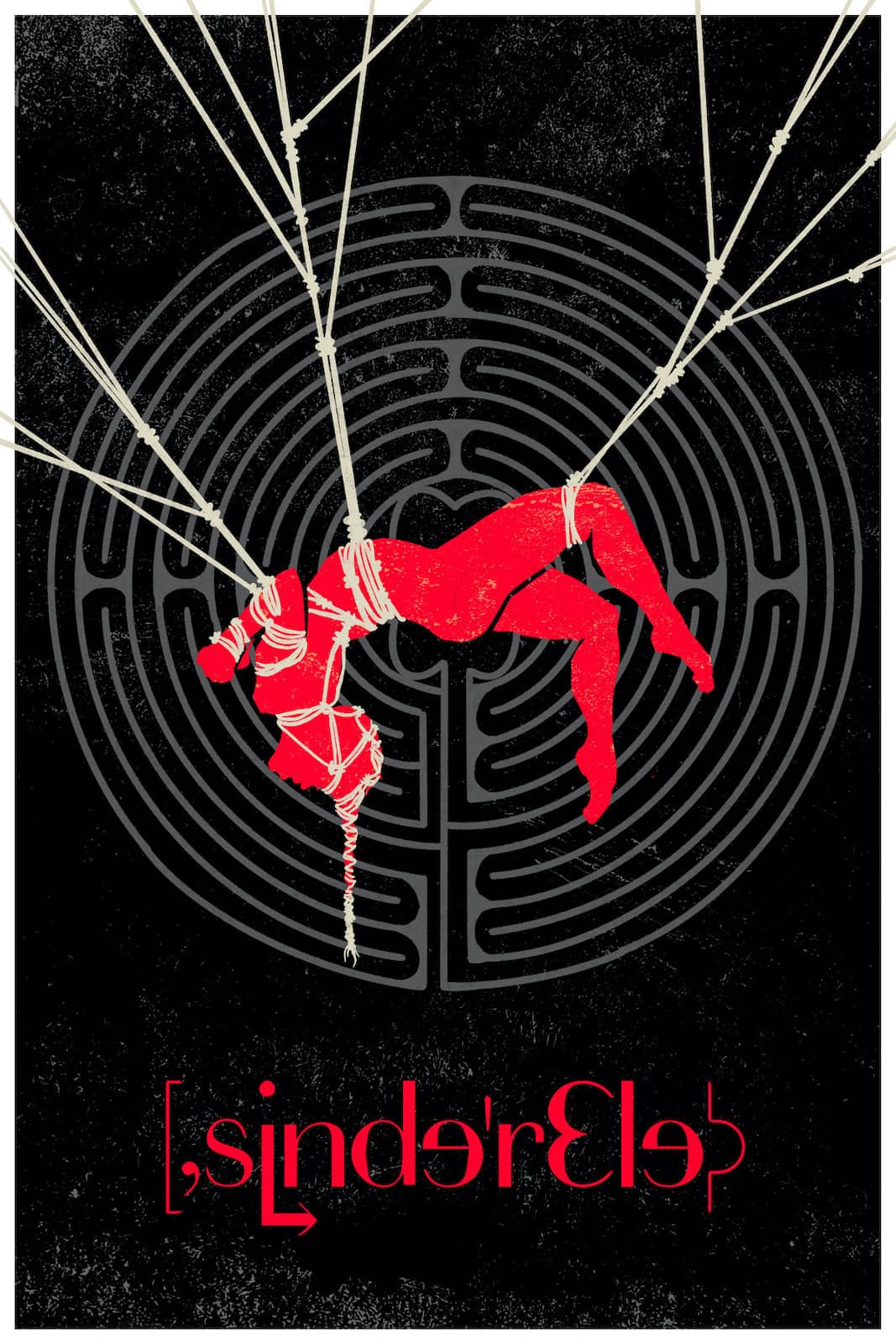
You say you make movies in a fast and dirty way. How does moving quickly help or hinder you?
Frances: I have to change plans a lot as the producer, and it drives people I’m close to crazy. I’m constantly watching the market. I’m the one talking to clients, and I’m always listening to what people want – as well as protecting the people I work with. That’s the job of a producer. My partners think I like the chaos, but I’m not sure about that. I think I learned to live with it and leverage it for success.
Changing all the time can be emotionally draining. However, being flexible and making those changes has opened amazing opportunities in this time, which is crazy after the pandemic. That’s our biggest flaw, having to change all the time – but it’s also our biggest strength. We stay able to move; I think that’s the way things are now after COVID.
Dionicio: For me, this can be really complicated & chaotic. Frances is really good at it – she’s the queen of chaos. Yet this way of working has given me the ability to enjoy the process and realize this is a new world. Just as my ancestors would say, we need to know how to flow with chaos; we must learn how to walk through fire without burning.
Working fast has been a great lesson for tolerance, learning to focus on my main task and smiling through the process.

What is your project Sirena Roja? What are the intentions & influences behind it?
Frances: We went to Puerto Vallarta to film our TV show, Salsa Sana. We agreed on an interview with a band a year before, but when we got there, there were legal problems with the contracts.
We took our costumes with us in case we ended up filming a music video. We didn’t have a plan as such, but we improvised. It was a fun exercise to realize what we can do in twenty-four hours. In fact, it was the first video we started editing ourselves. That project showed us we can do things very quickly without any special equipment – it’s more about the talent than the budget. This wasn’t an expensive shoot; we didn’t spend a lot of money because we stayed with a friend who has an amazing property and agreed we could shoot there.
Dionicio: Sirena Roja was really fun because we thought of it so quickly. Frances had the idea of producing a music video, and while we were shooting for another of our projects we formally started planning it. Some months ago I spent a lot of time with a musician friend, Diego Lombardo, and we started creating music. We already had the track ready, so it was simple to create the narrative around this song.
For me, it’s important to look at what already exists, so I investigated the classical myth of sirens or mermaids, these beautiful creatures that seduced and then drowned sailors. By that time I was studying filmmaking, so I was also able to reach technical decisions as well. We read The Little Mermaid by Hans Christian Anderson which of course was the inspiration for the Disney movie (and in real life was inspired by the author’s unrequited queer love interest).
I’m a big fan of pyrotechnics – I found some fireworks in my backpack and we used them for the video. I realized we should always use what we already have instead of being frustrated because of something we’re missing. You don’t need a dolly or a big expensive camera to produce something good – use what you already have.

What do you think happens to the Siren at the end of the short film?
Frances: I think that she’s free. I don’t know if she wants to be on land, but I think she becomes free and she’s freed by the Shaman. In the beginning, I wrote a horror story for this video – and Dionicio said “no”.
Dionicio: I agree on the Siren being free. Several stories about sirens have a terrible ending and are depicted as evil, but in Sirena Roja, she’s free. I think we should change the way we depict feminine & androgynous entities.
What advice do you have for film students?
Frances: I learned everything I know by producing & working, and I would suggest that the best thing aspiring filmmakers can do is to be producers. Find a film or filmmakers slightly more advanced than you and go & intern.
If you’re studying and working at the same time, make time for your craft. Don’t go to the bar, don’t go to the club – go & intern. You’ll eventually get paid. Keep working on projects throughout your whole degree and create personal goals to get more efficient. The TV industry is very fast: you need to be able to shoot in one day and edit in two, like telenovelas.
Watch everything you can, and find inspiration from other filmmakers. Also, contact local filmmakers and try to work with them. You don’t need to go to L.A. to be a filmmaker. There are people everywhere making content. Go on Instagram and TikTok – learning how to market your content is the key to creating a career in the creative field.
Dionicio: Don’t marry the system that tells you to be at school finishing your homework so you can become the best pupil. Just live. If you have the opportunity to work or collaborate while you’re studying, do so. Last but not least, break the societal cycle that dictates how you should be. Be open to and follow your inner passion.
¿Qué se necesita para hacer una estrella? ¿Qué se debe hacer para crear una vida impulsada por el desempeño? Nos reunimos con los fundadores de Sinderela, la organización artística multidisciplinaria sobre creación de contenido rápido y sucio para descubrir cómo producir contenido en la vía rápida después del caos de la pandemia de COVID-19.
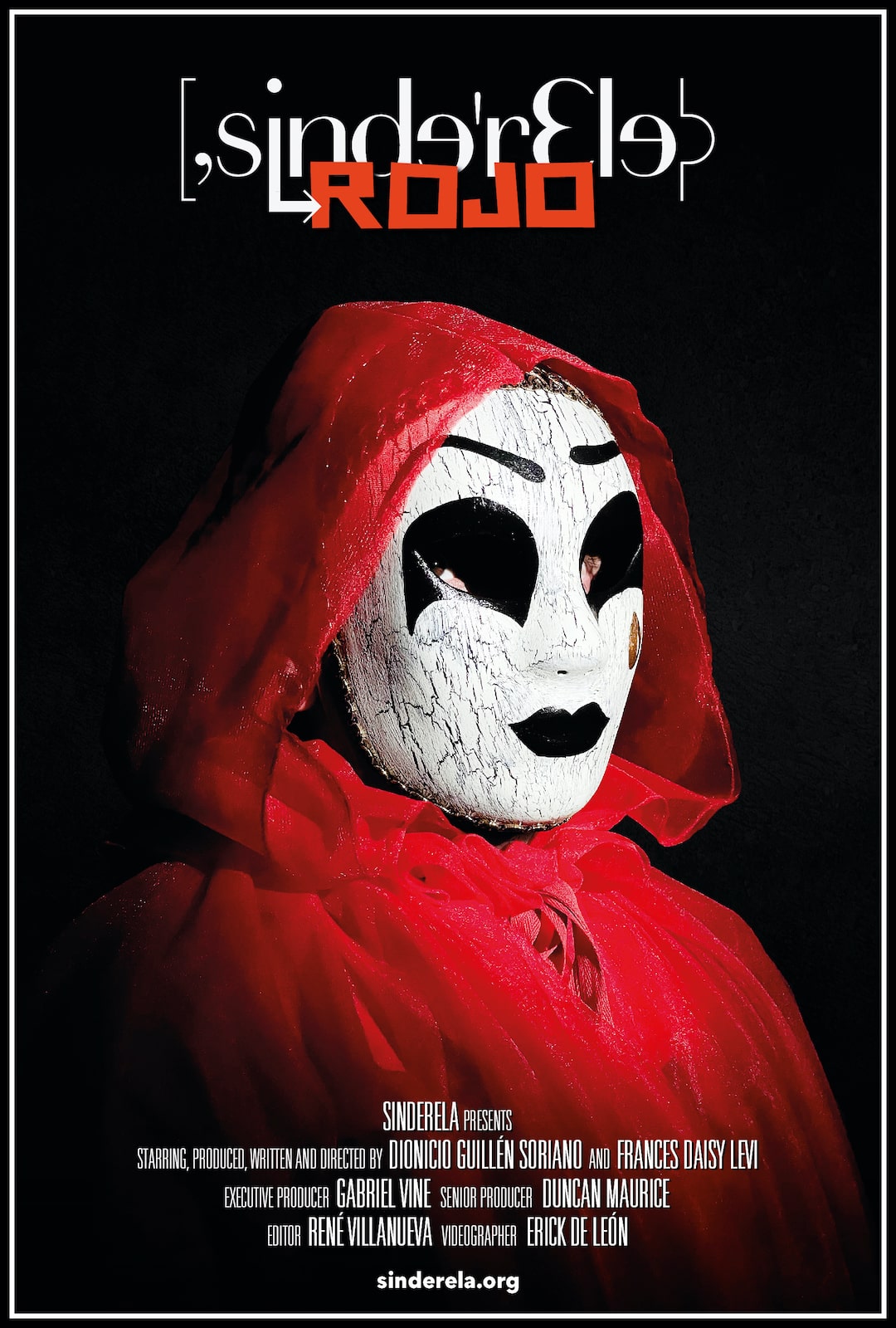
Cine Diario: ¿Qué es Sinderela?
Frances: Es un espacio creado por emprendedores amantes del arte. Nos dedicamos a contar historias sobre las cosas aterradoras de la vida y crear activismo pacífico, mostrando las realidades de la vida a través del arte y trabajando con los subempleados.
Como Sinderela, realmenteestamos tratando de crear un legado para las personas que no necesariamente han tenido la oportunidad de estar en un escenario global antes, pero que son dignos de ello.
Dionicio: Sinderela es un espacio de contenidos diversos que aborda el género, la violencia y la diversidad corporal. La vida moderna puede verse como una historia de terror en sí misma; nos enfocamos en temas de los que la gente no quiere o no quiere hablar. Nuestro objetivo es crear un legado de lo macabro para las personas que trabajan con nosotres y, por supuesto, para nosotres mismes.

¿Cuál es tu visión del cine y qué quieres lograr a través del cine?
Frances: Queremos demostrarle a todo el mundo que, si tienes una historia que contar, no necesitas equipos sofisticados ni gastar mucho dinero. Necesitas estudiar la forma de arte viendo películas, conociendo a otros cineastas y colaborando con gente increíble. Puedes crear contenido que importa, sin gastar medio millón de dólares en la escuela de cine.
Dionicio: Me formé como coreógrafo y llegué a producir a través de eventos en vivo y teatro. Para mí ha sido una gran experiencia aprender a hacer cine en la escuela de cine Raindance. He estudiado comunicación asertiva y colaborativa con cada miembro de mi equipo con el lenguaje cinematográfico adecuado. Pero estoy de acuerdo con Frances en que necesitas trabajar con los recursos que tienes.
Pon toda tu creatividad en los recursos disponibles y colabora con personas que ya están creando. Puede que no sea perfecto, pero pueden aprender juntes. La magia viene de comprometerse con el viaje.
¿Cuáles son tus mayores inspiraciones creativas?
Frances: Soy periodista: me inspira la vida real, las historias reales, la gente real, la vida en la calle. Surgí de los clubes nocturnos y de la escena musical, así que me interesan mucho las historias condensadas como en las letras de las canciones. Me gusta hacer contenido que contenga tres, cuatro, cinco microrrelatos que se fusionen para crear una historia más grande.
Nuestro equipo de edición me odia porque para crear veinte minutos de historia tenemos que editar unos dos mil cortes. Necesitábamos ser súper delgados en la pandemia y parte de nuestro contenido está dirigido por la danza y la actuación: horas y horas de práctica de ballet clásico y trabajo de puntas en 2021, por ejemplo. Como mi coreógrafo, el pobre Dionicio se tira de los pelos cuando me equivoco por milésima vez.
Dada la capacidad de atención moderna, siempre trato de resumir una historia en el menor tiempo posible. De una manera menos efímera, por supuesto, me inspiro mucho en Helmut Newton, el fotógrafo de moda. A nivel práctico, me encanta el modelo de la época dorada de Hollywood, en la que funcionaban como un estudio de telenovelas, hacían una película a la semana y compartían recursos entre producciones.
Me encanta comparar la productividad del Viejo Hollywood con la del Hollywood moderno que invirtió siete años para hacer la aburrida película número 87 de Spider-Man.
También me inspiran la gente de clase trabajadora y las películas de cocina. La inspiración está en todas partes en la vida: ver a la gente trabajar y crear cosas con sus manos es mágico para mí.
Dionicio: De niño estaba pegado a la televisión viendo todo tipo de contenido, desde dibujos animados hasta documentales. Soy de Guadalajara y había un canal dedicado al arte local en la noche que me encantaba ver. Eso definitivamente me inspiró a crear mi propio contenido, pero más que eso, a acercarme a las personas que realmente deberían aparecer en estos programas en función de su talento. Desde el principio me di cuenta de que contratar a los mismos actores es aburrido: quería hacer algo diferente a lo que hace la televisión normal.
Los temas fascinantes para mí incluyen el trabajo sexual, las historias de miedo y la fantasía, pero uno de mis temas favoritos de todos los tiempos es la metafísica.
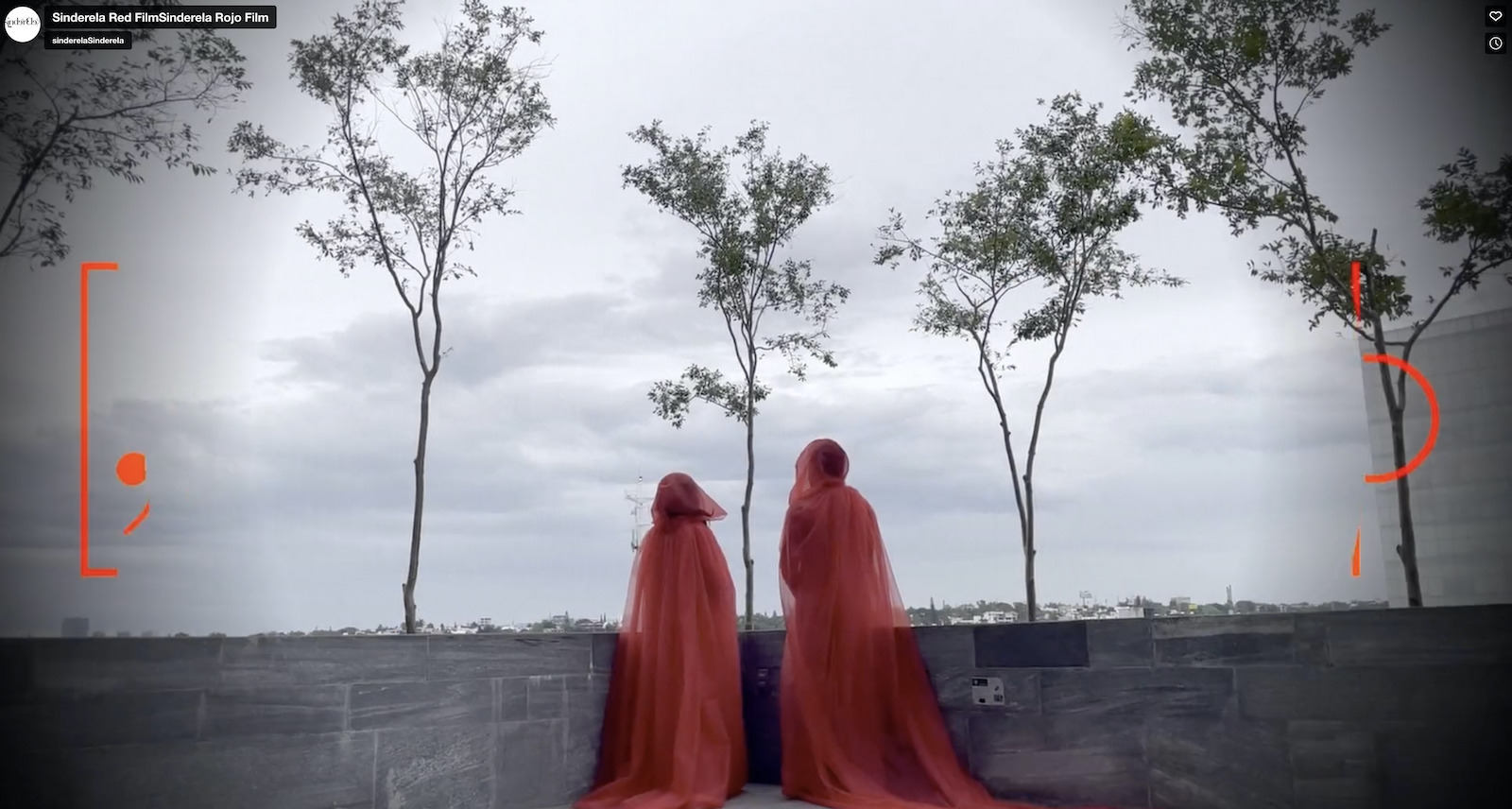
Cuéntanos sobre tu proceso creativo.
Frances: Depende si es personal o basado en el cliente. Para los clientes, mi proceso personal comienza con la máquina de marketing. Para el contenido personal, ya sabemos lo que queremos crear, pero siempre seré un especialista en marketing, por lo que la audiencia es lo primero.
Para Sinderela , tenemos una forma de trabajar muy específica: siempre comienza con la música. Luego vienen los disfraces. No comenzamos con la historia hasta que se decide la música porque está relacionada con la danza. Lo textual y lo visual están muy cerca; la Sinderela tiene éxito en este momento porque a todos nos gusta la música.
Dionicio: El proceso creativo es mi gran amor, y le dedico tiempo y paciencia. Me tomo unos días fuera de la ciudad en la naturaleza para pensar qué quiero hacer y organizar todas mis ideas. Actualmente pienso en mi proceso creativo como un entrenamiento, ya que siempre estamos en movimiento, viendo diferentes contenidos.
Para mí, el proceso creativo es como la comida: algo que tomas como desayuno, almuerzo y cena todos los días.
Dices que haces películas de una manera rápida y sucia. ¿Cómo te ayuda o te dificulta moverte rápidamente?
Frances: Tengo que cambiar mucho de planes como productor, y eso vuelve loca a la gente con la que estoy cerca. Estoy constantemente mirando el mercado. Soy el que habla con los clientes y siempre escucho lo que la gente quiere, además de proteger a las personas con las que trabajo. Ese es el trabajo de un productor. Mis socios piensan que me gusta el caos, pero no estoy seguro de eso. Creo que aprendí a vivir con eso y aprovecharlo para el éxito.
Cambiar todo el tiempo puede ser emocionalmente agotador. Sin embargo, ser flexible y hacer esos cambios ha abierto oportunidades increíbles en este tiempo que es una locura después de la pandemia. Ese es nuestro mayor defecto, tener que cambiar todo el tiempo, pero también es nuestra mayor fortaleza. Seguimos siendo capaces de movernos; Creo que así son las cosas ahora después de COVID.
Dionicio: Para mí, esto puede ser muy complicado y caótico. Frances es realmente buena en eso: es la reina del caos. Sin embargo, esta forma de trabajar me ha dado la capacidad de disfrutar el proceso y darme cuenta de que este es un mundo nuevo. Como dirían mis ancestros, necesitamos saber fluir con el caos; debemos aprender a caminar a través del fuego sin quemarnos.
Trabajar rápido ha sido una gran lección de tolerancia, aprender a concentrarme en mi tarea principal y sonreír durante el proceso.

¿Cuál es tu proyecto Sirena Roja? ¿Cuáles son las intenciones e influencias detrás de esto?
Frances: Fuimos a Puerto Vallarta a filmar nuestro programa de televisión, Salsa Sana. Acordamos una entrevista con una banda un año antes, pero cuando llegamos hubo problemas legales con los contratos.
Llevamos nuestros disfraces con nosotros en caso de que termináramos filmando un video musical. No teníamos un plan como tal, pero improvisamos. Fue un ejercicio divertido darnos cuenta de lo que podemos hacer en veinticuatro horas. De hecho, fue el primer video que comenzamos a editar nosotros mismos. Ese proyecto nos mostró que podemos hacer las cosas muy rápidamente sin ningún equipo especial: se trata más del talento que del presupuesto. Esta no fue una sesión costosa; no gastamos mucho dinero porque nos quedamos con un amigo que tiene una propiedad increíble y acordamos que podíamos filmar allí.
Dionicio: Sirena Roja fue muy divertido porque lo pensamos muy rápido. Frances tuvo la idea de producir un video musical y, mientras filmábamos otro de nuestros proyectos, empezamos a planificarlo formalmente. Hace unos meses pasé mucho tiempo con un amigo músico, Diego Lombardo, y empezamos a crear música. Ya teníamos la pista lista, por lo que fue sencillo crear la narrativa en torno a esta canción.
Para mí es importante mirar lo que ya existe, así que investigué el mito clásico de las sirenas o sirenas, estas hermosas criaturas que seducían y luego ahogaban a los marineros. En ese momento estaba estudiando cine, por lo que también podía tomar decisiones técnicas. Leímos La Sirenita de Hans Christian Anderson, que por supuesto fue la inspiración para la película de Disney (y en la vida real se inspiró en el interés amoroso queer no correspondido del autor).
Soy un gran fanático de la pirotecnia. Encontré algunos fuegos artificiales en mi mochila y los usamos para el video. Me di cuenta de que siempre debemos usar lo que ya tenemos en lugar de sentirnos frustrados por algo que nos falta. No necesita una plataforma rodante o una cámara grande y costosa para producir algo bueno: use lo que ya tiene.

¿Qué crees que le sucede a la Sirena al final del cortometraje?
Frances: Creo que ella es libre. No sé si quiere estar en tierra, pero creo que se libera y es liberada por el chamán. Al principio, escribí una historia de terror para este video, y Dionicio dijo “no”.
Dionicio: Estoy de acuerdo en que la Sirena sea gratis. Varias historias sobre sirenas tienen un final terrible y son representadas como malvadas, pero en Sirena Roja, ella es libre. Creo que deberíamos cambiar la forma en que representamos las entidades femeninas y andróginas.
¿Qué consejo tienes para los estudiantes de cine?
Frances: Aprendí todo lo que sé produciendo y trabajando, y sugeriría que lo mejor que pueden hacer los aspirantes a cineastas es ser productores. Encuentre una película o cineastas un poco más avanzados que usted y haga una pasantía.
Si estás estudiando y trabajando al mismo tiempo, tómate un tiempo para tu oficio. No vayas al bar, no vayas al club, ve e interna. Eventualmente te pagarán. Sigue trabajando en proyectos a lo largo de toda tu carrera y crea metas personales para ser más eficiente. La industria de la televisión es muy rápida: necesitas poder filmar en un día y editar en dos, como las telenovelas.
Mira todo lo que puedas y encuentra inspiración en otros cineastas. Además, contacta a cineastas locales y trata de trabajar con ellos. No necesitas ir a Los Ángeles para ser cineasta. Hay gente en todas partes creando contenido. Vaya a Instagram y TikTok: aprender a comercializar su contenido es la clave para crear una carrera en el campo creativo.
Dionicio: No te cases con el sistema que te dice que estés en la escuela terminando tu tarea para convertirte en el mejor alumno. Solo vive. Si tienes la oportunidad de trabajar o colaborar mientras estudias, hazlo. Por último, pero no menos importante, rompa el ciclo social que dicta cómo debe ser. Esté abierto y siga su pasión interior.





